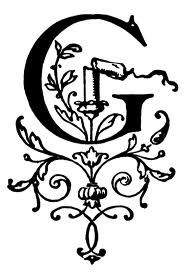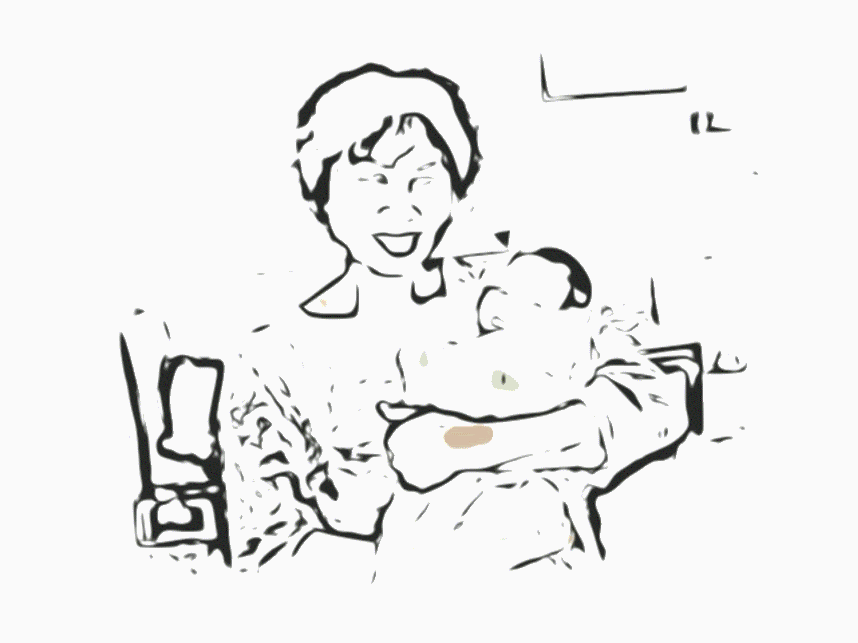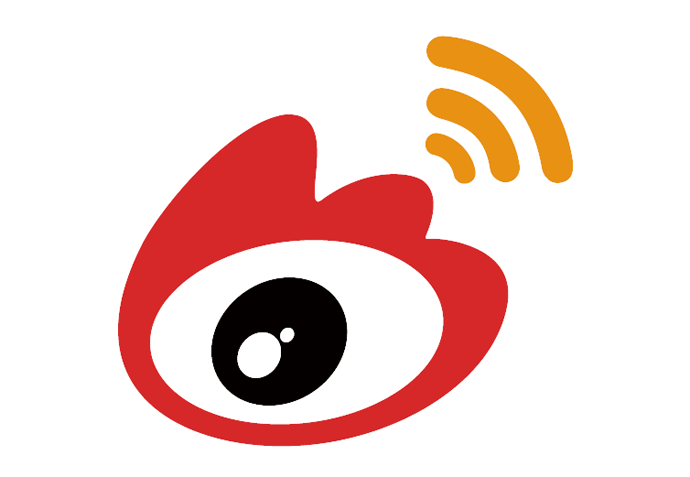
- Pau d' Arco Bark
 Pau d Arco[/caption]
Pau d Arco[/caption]
Learn more about Pau D Arco…
Pau d'Arco hails from the inner bark of the tall, flowering tree Tabebuia impetiginosa, and is native to the exotic rain forests of South America. Pau d'Arco is known for its holistic goodness and is traditionally used to support the body's internal balance. (原產於熱帶雨林南美洲,保羅D'阿科提取於高大開花的風鈴木樹的樹皮內層,保羅D'阿科以其全面的善良和傳統上用來支撐身體內部的平衡。)***
保哥果
保羅D'阿科樹皮提取物毛茛根提取物
酵母平衡
The lumber of the Pau D Arco tree is prized for its strength, and is used for building boats, houses, tools and bows used for hunting by some indigenous rainforest peoples.
It has been used as an herbal medicine dating as far back as the time of the Incas. In the more recent past (during the past 50 years or so) Pau D Arco, and certain isolated phytochemical compounds of the plant (lapachol and beta lapachone, for instance), have been tested extensively in medical and scientific laboratory environments.
Results of these tests have documented effective anti-cancerous, anti-tumor and anti-leukemic properties. Most importantly for our information on this website, this tea is a potent antifungal, and is used in many parts of the world to treat Candida and other fungal infections.
Interestingly, the plant in “whole form” (such as the shavings used for making tea) is shown to have a wider range of healing effects and less side effects than the isolated compounds.
about .com
Pau d'arco (Tabebuia impetiginosa and Tabebuia avellanedae) is a type of tree native to the rainforests of Central and South America. In herbal medicine, extracts of the bark of the pau d'arco tree have long been used to treat a range of health problems. Now widely available in dietary supplement form, pau d'arco extract is said to offer a number of health benefits.
Pau d'arco contains many compounds thought to influence health, including quercetin (a type of antioxidant) and anthraquinones (a substance with laxative effects).
Benefits of Pau D'Arco
To date, research on the health effects of pau d'arco is fairly limited. However, there's some evidence that pau d'arco may offer certain benefits. Here's a look at several key study findings:1) Cancer
In a report published in the Journal of Ethnopharmacology, scientists reviewed the available research on pau d'arco and found that the herb may offer anti-cancer benefits. For example, laboratory studies indicate that beta-lapachone (a compound found in pau d'arco) may help induce apoptosis: a type of programmed cell death essential for stopping the proliferation of cancer cells. Until the anti-cancer effects of pau d'arco are explored in larger studies, however, pau d'arco cannot be recommended in treatment or prevention of cancer.2) Inflammation
Pau d'arco may also help fight inflammation, according to a study published in the Journal of Ethnopharmacology in 2008. In tests on mice, the study's authors determined that pau d'arco may suppress the production of pro-inflammatory substances known as prostaglandins. Although the study's authors conclude that pau d'arco extract could potentially aid in the treatment of inflammation-related conditions like arthritis and atherosclerosis, it's important to note that there is currently a lack of clinical trials testing the use of pau d'arco for these conditions.3) Fungal Infections
For a 2001 report published in the Journal of Ethnopharmacology, researchers analyzed the antifungal activity of 14 types of Paraguayan plants commonly used in traditional medicine. Their findings revealed that — along with Paraguayan starbur, palo blanco, and corrida yerba de guava — pau d'arco had the highest activity against fungi and yeasts.Uses for Pau D'Arco
Pau d'arco extract is typically touted as a natural remedy for the following health problems:- arthritis
- asthma
- bronchitis
- colds
- diabetes
- heart disease
- hemorrhoids
- high blood pressure
- inflammation
- lupus
- pain
- Parkinson's disease
- psoriasis
- yeast infections
Safety
Due to a lack of research, little is known about the safety of long-term use of supplements containing pau d'arco. However, there's some concern that certain compounds found in pau d'arco may have toxic effects when taken at high doses. These compounds include hydroquinone, which may cause liver and kidney damage. In addition, pau d'arco may trigger side effects like dizziness, nausea, vomiting, and diarrhea. Since pau d'arco may also cause blood clotting, it should be avoided by people with clotting disorders and/or anyone using blood-thinning medications.Where To Find Pau D'Arco
Widely available for purchase online, dietary supplements containing pau d'arco extract can be found in many natural-foods stores and in stores specializing in dietary supplements.
Sources
Byeon SE, Chung JY, Lee YG, Kim BH, Kim KH, Cho JY. "In vitro and in vivo anti-inflammatory effects of taheebo, a water extract from the inner bark of Tabebuia avellanedae." J Ethnopharmacol. 2008 Sep 2;119(1):145-52.
Gómez Castellanos JR, Prieto JM, Heinrich M. "Red Lapacho (Tabebuia impetiginosa)--a global ethnopharmacological commodity?" J Ethnopharmacol. 2009 Jan 12;121(1):1-13.
Portillo A, Vila R, Freixa B, Adzet T, Cañigueral S. "Antifungal activity of Paraguayan plants used in traditional medicine." J Ethnopharmacol. 2001 Jun;76(1):93-8.
cited from WEB MD
Other Names:
Bignonia heptaphylla, Ébénier de Guyane, Ébène Vert, Handroanthus impetiginosus, Ipe, Ipe Roxo, Ipes, Lapacho, Lapacho Colorado, Lapacho Morado, Lébène, Pink Trumpet Tree, Purple Lapacho, Quebracho, Red Lapacho, Tabebuia avellanedae, Tabebuia heptaphylla, Tabebuia ipe, Tabebuia palmeri, Tabebuia impetiginosa, Taheebo, Taheebo Tea, Tecoma impetiginosa, Tecoma ipe, Thé Taheebo, Trumpet Bush.
OVERVIEW
Pau d'arco is a tree with extremely hard wood. Its name is the Portuguese word for “bow stick,” an appropriate term considering the tree’s use by the native South American Indians for making hunting bows. The bark and wood are used to make medicine.
Though possibly unsafe, especially at higher doses, pau d'arco is used to treat a wide range of infections. These include viral respiratory infections such as the common cold, flu, and H1N1 (swine) flu; sexually transmitted infections such as gonorrhea and syphilis; infections of the prostate and bladder; ringworm and other parasitic infections; yeast infections; and infectious diarrhea.
Pau d’arco is also used for cancer. Interest in this use was intensified by extensive research in the 1960s that focused on the possible anti-cancer activity of lapachol, one of the chemicals in pau d’arco. However, research studies were stopped because, at the amounts needed to be effective against cancer, pau d’arco might well be poisonous. Among other things, it can cause severe internal bleeding.
Other uses for pau d’arco include diabetes, ulcers, stomach inflammation (gastritis), liver ailments, asthma, bronchitis, joint pain, hernias, boils, and wounds. Because some people see pau d’arco as a “tonic and blood builder,” it is also used to treat anemia.
Pau d'arco is applied directly to the skin for Candida yeast infections.
Sometimes it’s hard to know what is in pau d’arco products. Teas, labeled as pau d'arco or lapacho, do not always contain pau d’arco (Tabebuia species). In some cases, they contain the related species, Tecoma curialis. Additionally, some product labels state that the product contains the inner bark of pau d’arco, which is thought by some people to be more effective than outer bark, when in fact the product contains outer bark.
How does it work?
There isn't enough information available to know how pau d'arco works.PAU D'ARCO Uses & Effectiveness
- Yeast infections.
- Common cold.
- Flu.
- Diarrhea.
- Bladder and prostate infections.
- Intestinal worms.
- Cancer.
- Diabetes.
- Ulcers.
- Stomach problems.
- Liver problems.
- Asthma.
- Bronchitis.
- Arthritis-like pain.
- Sexually transmitted diseases (gonorrhea, syphilis).
- Boils.
- Other conditions.
PAU D'ARCO Side Effects & Safety
Pau d'arco is POSSIBLY UNSAFE at typical doses. At high doses, it is LIKELY UNSAFE. High doses can cause severe nausea, vomiting, diarrhea, dizziness, and internal bleeding. Pau d'arco should be used with caution. Talk with your healthcare provider before you decide to take it.Special Precautions & Warnings:
Pregnancy and breast-feeding: During pregnancy, pau d’arco is POSSIBLY UNSAFE when taken by mouth in typical amounts, and LIKELY UNSAFE in larger doses. Not enough is known about the safety of applying it to the skin. The best rule is, don’t use it orally or topically if you are pregnant. The safety of using pau d’arco during breast-feeding has not been well studied. But, since it might be unsafe for anyone to use, it makes sense to avoid pau d’arco if you are breast-feeding. Bleeding disorders: Pau d'arco can delay clotting and might interfere with treatment in people with bleeding disorders. Surgery: Pau d'arco might slow blood clotting and could increase the chance of bleeding during and after surgery. Stop using it at least 2 weeks before a scheduled surgery.PAU D'ARCO Interactions
Be cautious with this combination
- Medications that slow blood clotting (Anticoagulant / Antiplatelet drugs) interacts with PAU D'ARCO Pau d'arco might slow blood clotting. Taking pau d'arco along with medications that also slow clotting might increase the chances of bruising and bleeding.Some medications that slow blood clotting include aspirin, clopidogrel (Plavix), diclofenac (Voltaren, Cataflam, others), ibuprofen (Advil, Motrin, others), naproxen (Anaprox, Naprosyn, others), dalteparin (Fragmin), enoxaparin (Lovenox), heparin, warfarin (Coumadin), and others.
PAU D'ARCO Dosing
The appropriate dose of pau d’arco depends on several factors such as the user’s age, health, and several other conditions. At this time there is not enough scientific information to determine an appropriate range of doses for pau d’arco. Keep in mind that natural products are not always necessarily safe and dosages can be important. Be sure to follow relevant directions on product labels and consult your pharmacist or physician or other healthcare professional before using.
***
Preparation and Uses of Pau D Arco
To make an effective Pau D Arco tea, simply prepare a decoction as follows:
1 quart of pure water
4 teaspoons Pau D Arco loose dried bark
Place water and Pau D Arco bark in a pot, bring to a boil, reduce heat slightly and let it simmer at a very gently rolling boil for 20 minutes.
Drink 1 cup of this tea (hot or cold) anywhere from two to eight times a day. You can also use this decoction, once it has cooled to room temperature, as a topical treatment for fungal skin infections (soak a cloth in the liquid and apply as a compress to the infected areas). You can also use it as a douche or enema solution for the treatment of internal yeast overgrowth.
Drinking Pau D Arco tea can cause some die-off symptoms due to its anti-fungal nature. Please start with a low dose and increase gradually.
Home Remedies For Yeast Infection
Getting rid of a persistent yeast infection can be quite challenging. If you've been fighting a losing battle with Candida albicans, you might want to consider trying one or more of these home remedies for yeast infection.
References: Anti-fungal Herbs And Essential Oils Conquering Candidiasis Naturally
Tea Tree Oil
Tea tree oil has many uses for healing, so it's not surprising to find that it has anti-fungal properties as well. Candida albicans is really a fungus, although most people refer to it as a yeast. Research shows that tea tree oil is quite effective on fungal infections. It works by attacking the cell membrane, which makes it easier for anti-fungal agents to get through the cell membrane and kill the fungus. It's best not to use tea tree oil full-strength, as it can irritate the skin. Always dilute it with olive oil, or another carrier oil. Use one part tea tree oil to three parts carrier oil. Like most essential oils, tea tree oil seems to work better when it's used in lower concentrations. And of course, tea tree oil is for external use only. Don't take it internally.Myrrh
Myrrh has been used for centuries by cultures across the world to treat thrush, candida, and other yeast infections. Now research is backing up myrrh's reputation as an anti-fungal. It seems to work by stimulating the immune system to fight off candida overgrowth, along with other disease-causing organisms, including E. coli and Staphylococcus aureus. A persistent diaper rash is often caused by a yeast infection. Myrrh can be quite effective against this type of infection. Use a calendula ointment along with myrrh to sooth the irritation and inflammation.Other Helpful Herbs
Garlic not only stimulates the immune system, but it's a well-known anti-fungal as well. You can eat it raw, but it can upset the stomach, so many people prefer to take it as a tablet. Look for coated tablets. By the time the coating dissolves, the garlic tablet is deep inside your intestine, which is where candida grows best. Berberine also stimulates the immune system. It's found in goldenseal, barberry, and oregon grape root. Goldenseal has been overharvested and is becoming endangered, so barberry and oregon grape root are good substitutes. Avoid using these herbs if you are pregnant. Astragalus and pau d'arco also stimulate the immune system. You can take astragalus as capsules, and use pau d'arco in a tea.Should You Be On A Candida Diet?
Some people with serious health problems from candida need to go on a candida diet. This involves removing all sugar, fruits, cheeses, breads, alcoholic beverages, mushrooms, and even vinegar, from the diet. Living on such a strict diet can be very difficult. Most of us can find relief by cutting out as much sugar as possible, since yeast grows on sugar. Eat lots of fresh veggies, along with small amounts of low-sugar fruits like strawberries, cherries, and papayas. Fish, chicken, and beef are good sources of protein, along with beans,lentils, and nuts. Corn, brown rice, quinoa, buckwheat, oats, and spelt are excellent choices for grains. Avoid wheat and rye. Try adding more cinnamon to your diet, as it's a natural blood sugar regulator. A yeast infection can be difficult to get rid of. The key to success with any treatment is to be persistent with it. Be patient and don't give up too soon, and you can control your candida infection.References: Anti-fungal Herbs And Essential Oils Conquering Candidiasis Naturally
Thrush, Babies, and Breastfeeding
What causes thrush? Candida albicans, which is a yeast that lives in our digestive tracts, is the culprit. Normally it's usually kept under control by beneficial bacteria, including Lactobacillus acidophilus.
However, there are certain conditions that can upset the balance between the yeast and the bacteria. Pregnancy is one of them. When a woman is pregnant, her hormone levels are different, which can lead to candidiasis. A woman who develops gestational diabetes is more prone to a yeast infection because of the excess sugar in her urine.
It's common for a woman who has had a cesarean section to develop candidiasis. This is because of the antibiotic treatment she received after surgery to prevent infection. Unfortunately, antibiotics wipe out all bacteria, both good and bad. This can allow Candida albicans to grow out of control, resulting in a yeast infection.
A baby can pick up a yeast infection when he or she passes through the birth canal if mom has vaginal candidiasis. Your baby can get oral thrush by nursing, especially if your nipples are raw and cracked. If only the mom is treated, she can be reinfected when she breastfeeds her baby.
What Are The Symptoms Of Thrush?
If your baby suddenly becomes fussy while nursing and pulls off the breast, you should suspect oral thrush. You may see white patches or spots in your baby's mouth, and you may notice what appears to be a white film on the tongue. Your baby may also have a diaper rash with a shiny appearance and raised patchy areas. Both these symptoms are characteristic of a diaper rash caused by Candida albicans. Mom's nipples may burn or feel itchy. Some women have shooting pains in the breasts after nursing. A woman may also have symptoms of a vaginal yeast infection, too.How Is Thrush Treated?
There are several different treatments for thrush, depending on how much pain mom and baby are having and which parts of the body are involved. Since the infection can be passed back and forth, both of them need to be treated, even if only one has any symptoms. A topical antifungal cream may be used on both mom's nipples and the baby's bottom, while also giving the baby an oral antifungal medication. Both mom and baby should be treated right after nursing, since this is when the infection is transferred. Since it only takes three hours for yeast to reproduce, using the medication regularly is important. Natural treatments include applying Calendula tincture to the nipples to relieve pain and irriation. Try rinsing your nipples with a solution of one tablespoon of vinegar to one cup of boiled water after each feeding. Echinacea or pau d'arco capsules can be taken orally to boost your immune system. Gentian violet is an old remedy recommended for thrush and yeast infections of the breast. An easy way to treat both mom and baby is to dip a swab into the gentian violet and let the baby suck on it for a few seconds. This should coat the inside of the baby's mouth. If it doesn't, paint the inside of the baby's mouth with the swab. Put the baby to your breast, and your yeast infection will be treated too. Mom should avoid sugary foods, wheat, and cheese. Eat yogurt with live cultures, and add garlic to your food. Taking vitamin supplements, including vitamin C, zinc, and B-complex, may help too. References: The Sore Truth
Cited from Darlene Norris
How to Treat Oral Candidiasis Using Home Remedies
Also known as thrush or yeast, oral candidiasis is a fungal infection that irritates mucous membranes of the mouth. Like a vaginal yeast infection, oral candidiasis is causes by Candida albicans, an organism that under the right conditions lives in the body without causing upset.
If the body's natural flora are out of balance due to use of antibiotics, steroids or oral contraceptives, a diet that is high in sugar or diabetes, a yeast infection may develop. Lack of sleep, illness and stress can also put the body at risk, since they all weaken immunity.
Candidiasis causes inflamed oral tissue, a white coating to form on the mouth and tongue, a sore throat and difficulty swallowing. An oral infection can spread from the mouth to the digestive tract, resulting in a fungal infection can spread from the mouth to the digestive tract, resulting in a fungal infection of the bowel.
Seek medical advice for chronic infections, as they are harder to treat if they reach the ears, intestine or esophagus. Meanwhile a good diet, natural medicine and vitamins help to prevent and treat oral candidiasis.
cited
Home Remedies For Treatment of Oral Candidiasis
Clove, lavender, myrrh and tea tree all help in treating oral candidiasis. These medicinal plants have strong disinfectant properties and contain volatile oils that are quite effective in treating fungal infections because they support the body's natural resistance and accelerate the healing process. Tea tree oil is a strong antifungal agent that has both immune stimulating and wound healing effects. Add three drops of tea tree oil to one cup of boiled water. Use the solution to dab the affected parts of your mouth several times a day.Yogurt With Live Cultures and Mouth Rinses
If the fungus spreads to the bowels, it may compete with the natural flora of the intestines, which are important for proper digestion. To support beneficial intestinal bacteria, take acidophilus supplements and eat yogurt that's low in sugar and contain live lactobacillus and acidophilus cultures. Pau d'arco's high tannin content and antimicrobial and immune stimulating compounds make it an effective mouth rinse. Add one teaspoon of the tincture to one cup of warm water, and rinse the mouth with it. To make an antifungal spice blend, mix equal amounts of crushed cumin or caraway seeds with ground cloves, which are all noted to have antifungal properties. Bring two cups of water to a boil. Pour the hot water over two teaspoons of the spice blend. Let the infusion steep for five to seven minutes. Rinse your mouth with several teaspoons of the mixture at least three times a day until symptoms abate. Remember to practice good oral hygiene by brushing your teeth after meals. The antifungal mouthwashes can supplement these preventative measures. During a bout of thrush, keep your toothbrush in disinfectant mouthwash and change it regularly since the fungi can survive in the damp bristles. Stay healthy with plenty of exercise, enough rest and a well balanced diet. Avoid eating sugar, which feeds fungal strains and promotes yeast infections. Source: Martin, Jeanne Marie, Rona, Zoltan P.,Complete Candida Yeast Guidebook: Everything You Need to Know About Prevention, Treatment & Diet. Three Rivers Press; 2000cited
Cited below Teresa Knudsen
People on a diet can have trouble losing weight. One option is no yeast and sugar, but add pau d'arco. It may help other ills: headache, depression, autism,and cancer.
The no yeast-no sugar diet addresses the build-up of yeast in the human body. The build-up is considered to be at the root of many ailments, including headache, depression, autism, and diseases such as cancer. Adding processed sugar to the body helps the yeast grow. Thus, to rid the body of yeast, the dieter avoids products with processed sugar and yeast.
Pau d'Arco
The inner bark of the taheebo tree is found in the Amazon rain forest. A tea or tincture can help remove yeast.Water
With general guidelines of 8 glasses of water a day, water helps with detoxing.Examples of food to avoid
- Anything with sugar or sugar-substitute and/or yeast.
- Fried foods
- Meat with hormones, antibiotics, and other additives
- Processed meats, such as bologna, sausage, hot dogs
- All forms of bread that have yeast and sugar as ingredients.
- Pasta, crackers, cookies, candy, ice cream, etc.
Examples of liquids to avoid:
- Anything with sugar or sugar-substitute and/or yeast.
- Sodas, pop, sugared fruit juices.
- Black Tea
- Coffee
- Beer
- Wine
- Spirits: At first, some practitioners allow moderate consumption of certain spirits, including rum, vodka, bourbon. Eventually, all spirits are avoided.
What Can People Eat?
- Meat: without hormones or other additives.
- Beef
- Chicken, eggs
- Pork
- Seafood
- Fresh vegetables
- Nuts such as walnuts, almonds, pecans
- Brown rice
- Potatoes and yams
Fruit
Fresh fruit is avoided for the first week or so, as the sugar can keep the yeast alive. However, benefits of fresh fruit, especially raspberries, blackberries, and blueberries, return these fruits to the diet within a week or two. Avoid grapes and bruised fruit.Dairy Products
These include milk, sour cream, cottage cheese, hard cheeses, and ice cream. Soy milk can replace regular milk, but soy is not advised for children.What about Junk Food?
Some "junk" food can be eaten in moderation, including plain popcorn and plain potato chipsYeast Die-Off Symptoms
Many people report a week or two of unpleasant symptoms when the yeast begins to die and exit the body. Linda Arndt notes in her article "Yeast Infection Humans Candida", "Detox symptoms can be gas, bloating, nausea, itchy skin, sweats, any flu like symptoms, if you feel these, one or any, it will give you an indication of how much toxins in your body that needed to be cleansed. "Peppermint Tea and Chamomile Teas Help with Yeast Die-Off Symptoms
People report some immediate relief by drinking water and/or brewing peppermint or chamomile tea. These teas can help digestion and provide headache relief.What about Cheating on this diet?
Almost everyone will cheat on a diet. On the no-yeast, no-sugar diet, dieters report immediately feeling the negative results of cheating. There are reports of upset stomachs or an overall feeling "bad." These effects can be modified by avoiding the yeast and sugar, and by drinking peppermint or chamomile tea, or using natural analgesics.Specific Ailments for the No Yeast-No Sugar diet
There are claims that the no-yeast, no-sugar diet can benefit people with candida yeast infections, or children with autism or help with a variety of physical and mental ills. Reports include feeling better, and lessening depression. There are claims for help with cancer and other diseases.Specific Carbohydrate Diet (SCD) and Autism
A diet similar to the no-yeast, no-sugar diet is the Specific Carbohydrate Diet. There are reports that children with autism can respond to a diet which avoids yeast, sugar, and some dairy products.
***
When you purchase Pau D Arco, make sure you trust the seller’s knowledge of this plant and its origin of sale. There are many species of the Pau D Arco tree, some with less healthful benefits than the truly medicinal variety of tree (Tabebuia impetiginosa, synonym = Tabgebuia avellanedae). In fact, there are over ten different species of Pau D Arco currently being logged in the South American lumber industry.
The Pau D Arco products sold in the US as medicinal herbal teas are sometimes no more than the bark shavings of these many varieties of logged trees, occasionally even mixed with mahogany bark, which has a similar color and aroma to the bark of the Pau D Arco tree.
Be sure the label says ”Tabebuia avellanedae”or “Tabebuia impetiginosa”, and/or once again – don’t buy it unless you trust the source.
相關中藥材 所謂赤芍,是一種中藥名,它能夠行瘀、止痛、消腫。它是毛茛科芍藥屬植物赤芍或傳赤芍的干燥的根。與芍藥是同屬植物。下面我們來看看赤芍的介紹。 一、赤芍的介紹 赤芍的原植物是赤芍或川赤芍等植物,在春、秋兩季採挖後出去根莖及泥沙,曬乾而得的藥材。原植物是多年生草本,根肥大,呈紡錘形或圓柱形,黑褐色。莖直立且在上部有分枝;葉互生,莖下部葉為二回三出複葉,上部為三出複葉,小葉卵圓形或橢圓形或披針形;花兩性,有苞片、萼片。 中藥成品赤芍乾燥根呈圓柱形,兩端粗細近於相等,稍彎曲,表面暗褐色或暗棕色,粗糙,有橫向凸起的皮孔及根痕,,質硬而脆,易折斷,斷面平整粉白色或黃白色。氣微香,味微苦澀。藥材以跟條粗長,外皮易脫落,皺紋粗而深,斷面白色,粉性大者為佳。 二、赤芍的主要成分 赤芍作為一味中藥,其主要成分包括芍藥甙、芍藥內酯甙、氧化芍藥甙、苯甲酰芍藥甙、芍藥吉酮、芍藥新甙、胡蘿蔔甙,此外,還含有赤芍精即d-兒茶精以及沒食子鞣質、苯甲酸等。研究還發現,赤芍還含有脂肪油、樹脂、糖、澱粉、粘液質和蛋白質等。 三、赤芍的種類 赤芍的原植物來源於幾種芍藥科的植物,它們分別是:1、芍藥;2、川赤芍;3、草芍藥;4、毛葉草芍藥;5、美麗芍藥;7、窄葉芍藥;8、塊根芍藥。 根據炮製方法的不同,赤芍可以有以下幾種類型: 1、赤芍:為類圓形薄片或斜片,表麵粉白色或粉紅色,中心有放射狀紋理,皮部窄,有的有裂隙,味苦,性微寒,具有清熱涼血、散瘀止痛的功能。 2.炒赤芍:顏色加深,偶有焦斑,炒後藥性偏於緩和,活血止痛而不傷中,可用於瘀滯疼痛。 3.酒赤芍:微黃色,略有酒氣。以活血散瘀力勝,清熱涼血作用較弱。多用於閉經或痛經,跌打損傷。
Check with Health Care Professionals First
As always, check with health care professionals regarding diets. References "Talk About Curing Autism." Arndt, Linda. "Yeast Infection Humans Candida." "Kids and SCD." Parzale, Ernestina. The Backyard Herbalist. "No Yeast Bread Recipe." Pau d’Arco Benefits and Cautions Explained Before You Buy.” “What is the Candida Diet and How Can It Help Me?”PAU D'ARCO
The Yeast overgrowth
免責聲明. 本網站所載資料只供一般參考之用。我們會竭力提供一個方便、實用而且資料豐富的網站,並確保一般的資料準確無誤。但並不對該等資料的準確性作出任何明示或隱含的保證。

QR code this page






沒有留言:
張貼留言